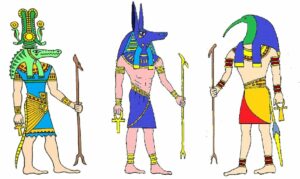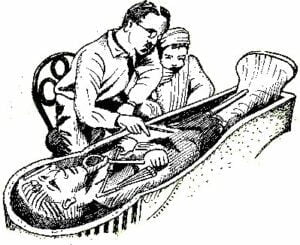
History – Egypt
Egypt is a fascinating place with so much history.
These blogs with 10 discussion questions for your lessons are FREE!
Who were the Ancient Egyptians Did you know who was the oldest ruling Pharaoh? Pepy II holds that record as well as the longest reign of any pharaoh. He came to the throne when six years old, and he was still the King of Egypt at the grand old age of 94. They worshipped hundreds of gods over long periods of time. The gods changed over the years, while others were ……. | Before the Valley of the Kings Pharaohs were buried in the great pyramids at Giza, however, there was a problem. They kept getting robbed! Then came Tuthmosis. He didn’t want his grave robbed, so looked for a place where it couldn’t be robbed. He found a remote valley that is between deep cliffs to the west of the River Nile, that became the Valley of the Kings. It …… | Do you believe in the Afterlife? The Ancient Egyptians believed in life after death, and their belief was that these parts of them went them to the Afterlife:
They thought that ….. | Everyone has heard of the Suez Canal, but did you know that 2,000 years ago the Egyptians had a canal called The Canal of the Pharaohs. The Egyptians built one back in ancient times, which was used, with a few interruptions until 767AD. It used existing waterways and a canal linking the River Nile to the Red Sea. When was it built? The Pharaohs begun it in ……. |
The Afterlife and the The Egyptians felt that after death you travelled to the underworld, called Duat. They thought they were going to a dangerous place, so dangerous that they would come across a lake that would be filled with snakes, there were other parts of the afterlife where they would come across lakes of fire! they were taught they would only meet these horrors if they had been a bad person. For this reason, they …… | Egyptians worshipped hundreds of gods over long periods of time. Some gods changed over the years, while others were forgotten and then rediscovered. Sometimes animals represented gods. The Jackal, Anubis, was the Protector of the Dead. The God of Wisdom, Thoth, and the Moon God, Khonssu, were represented by a baboon. Here is just a small selection of popular Egyptian deities. Anubis. ….. | Howard Carter discovers Tutankhamun’s tomb. On November 4th 1922 Howard Carter discovered the tomb of the Egyptian pharaoh King Tutankhamun. He had been employed by Lord Carnarvon since 1907 looking after the excavations of the tombs near Thebes. It appears that as his crew were clearing debris on November 4th their water boy tripped over a stone. On investigation it wasn’t just a stone, it was the top of a set of stairs. Then as they dug ……… | Can you work out how big the world is? Your children can actually work out how big the world is? You see 2,000 years ago Eratosthenes actually worked it out. It would be a superb exercise to see if he was correct, which, of course, he was. Well, nearly! He was a clever guy who lived in Egypt around 240BC. He worked out ………….. |

Who were the Egyptian Gods?
Egyptians worshipped hundreds of gods over long periods of time. Some gods changed over the years, while others were forgotten and then rediscovered. Sometimes animals represented gods. The Jackal, Anubis, was the Protector of the Dead. The God of Wisdom, Thoth, and the Moon God, Khonssu, were represented by a

Who were the Ancient Egyptians?
Did you know who was the oldest ruling Pharaoh? Pepy II holds the record for the longest reign of any pharaoh. He came to the throne when six years old, and he was still the King of Egypt at the grand old age of 94. How many Gods did they
Why the Valley of the Kings?
Before the Valley of the Kings Pharaohs were buried in the great pyramids at Giza, however, there was a problem. They kept getting robbed! Basically, pharaohs were buried in pyramids, with all their belongings. They became a tomb robbers dream. It appears that a pyramid was the wrong place to

The Afterlife and the process of Mummification
Do you find this weird? The Ancient Egyptians believed in life after death, and their belief was that parts of them went to the Afterlife, in fact those parts that went into the Afterlife were: The Ka, Ancient Egyptian conception of the soul, which could bring the corpse back to

Howard Carter discovers Tutankhamun’s tomb
On November 4th 1922 Howard Carter discovered the tomb of the Egyptian pharaoh King Tutankhamun. He had been employed by Lord Carnarvon since 1907 looking after the excavations of the tombs in Deir el-Bahri, near Thebes. Then in 1914, Lord Carnarvon received the concession to dig in the Valley of the Kings, and
